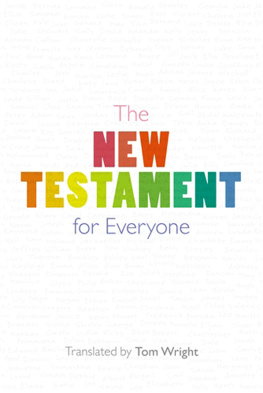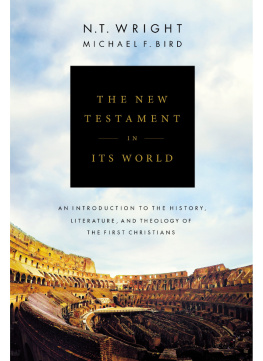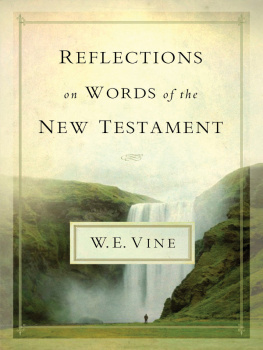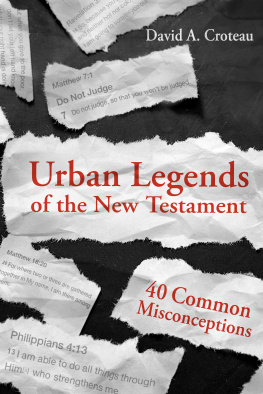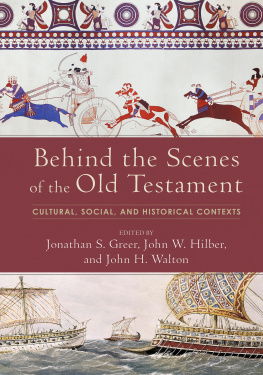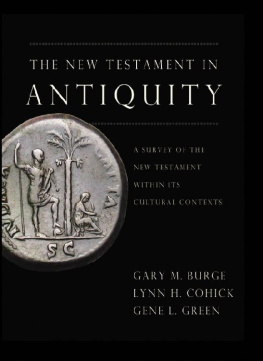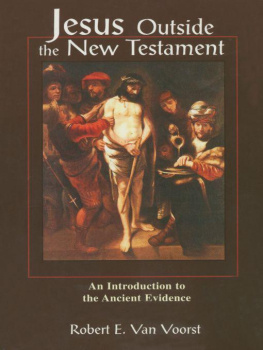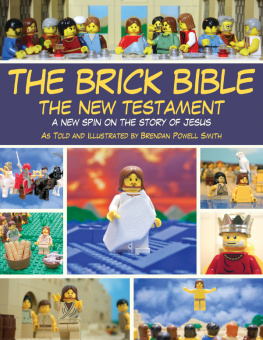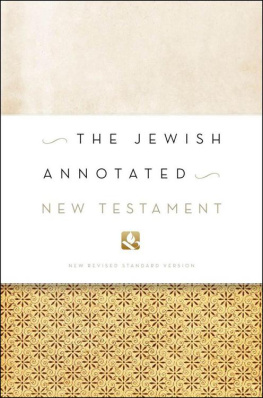Jehovah and the World of the Old Testament
Richard Neitzel Holzapfel, Dana M. Pike, David Rolph Seely
2009 Richard N Holzapfel, Dana M. Pike, and David R. Seely.
All rights reserved. No part of this book may be reproduced in any form or by any means without permission in writing from the publisher, Deseret Book Company, P.O. Box 30178, Salt Lake City Utah 30178. This work is not an official publication of The Church of Jesus Christ of Latter-day Saints. The views expressed herein are the responsibility of the author and do not necessarily represent the position of the Church or of Deseret Book. Deseret Book is a registered trademark of Deseret Book Company.

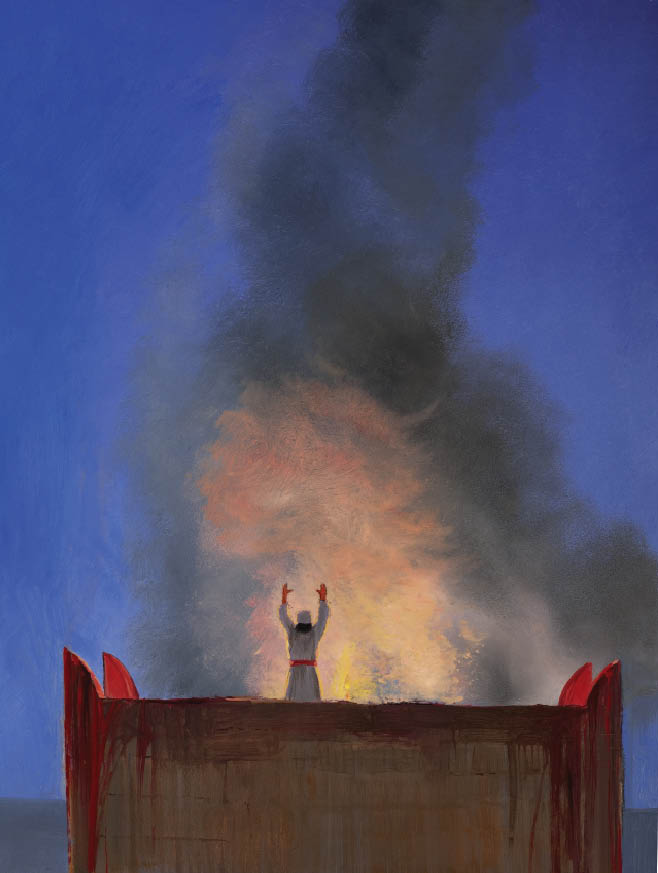
Michael Colemans paintings on the cover and the frontispiece depict a burnt offering at Solomons Temple. In the beginning, an angel of the Lord appeared unto Adam, saying: Why dost thou offer sacrifices unto the Lord? And Adam said unto him: I know not, save the Lord commanded me. The messenger then revealed, This thing is a similitude of the sacrifice of the Only Begotten of the Father (Moses 5:6-7).
Blood sacrificethe ritual slaughtering of animals and fowlswas the quintessential form of ancient worship and was an essential part of the lives of those who followed the Lord in the Old Testament. Understanding its significance can help us to fully appreciate this powerful symbol.
Blood represents lifeboth human life and spiritually redeemed life. It was a symbol of Gods saving power extended to people through covenant. The use of blood, and the symbolic nature of blood, was everywhere in Israelite ritual and bound the other elements of their sacrificial activities together. For example, at Mount Sinai Moses sprinkled blood on the Israelites as they made their covenant with Jehovah: And Moses took the blood, and sprinkled it on the people, and said, Behold the blood of the covenant, which the Lord hath made with you (Exod 24:8).
Sacrificial blood was sprinkled or smeared on the altar of the Tabernacle (Lev 1:5), and the consecrating of Aaronic priests involved sacrifices and blood (Exod 29:20-21).
The power of blood to make holy the ancient priests symbolizes the power of Christs atoning blood to make Gods children holy. Aaron, as the high priest, represented Christs saving power in human life. When Aaron took the sacrificial blood into the Holy of Holies on the Day of Atonement (Hebrew Yom Kippur), and sprinkled it on the mercy seat of the ark of the covenant (Lev 16:14-16), he symbolically represented Christ, the great high priest, who through the Atonement made it possible for all to enter into the holiest by the blood of Jesus (Heb 4:14; 10:19).
Acknowledgments
A number of individuals and institutions provided important help and permissions in our effort to reconstruct the world of the Old Testament. We acknowledge them throughout this book in the credit lines of our captions. We also thank Balage Balogh for his effort to visually reconstruct the world of the ancient Near East through his paintings, commissioned specifically for this project. His concern for historical accuracy takes tremendous effort, resulting in the many beautiful scenes depicted throughout this book. We also thank Michael Coleman, who created the paintings for the cover and frontispiece of the book, Sacrifice at Solomons Temple. His kindness knows no bounds.
We appreciate the contributions of several individuals whose donated time, resources, and support has allowed us to take our dream of such a project and make it a reality in living color. They will receive personal notes of thanks.
We also thank our student assistants who provided important help, including source checking and other duties associated with this project: Linda Bentley, Matthew Clayton, Heather Compton, Rachel Grover, Trevan Hatch, Kate Lindsay, Bethany Malouf, Julia Toone Manning, Rachael Moore, Kipp Muir, Jonathon R. Owen,
Jo Ann H. Seely, Alan Taylor, and Stephen Whitaker. We appreciate Daniel McClellans efforts in helping us create charts and in identifying and collecting the images for this book. His work during the past year and a half has proven invaluable to us. Additionally, we appreciate Joany Pinegar (administrative assistant at the Religious Studies Center, Brigham Young University) for helping keep the financial details for this project in good order and for providing helpful comments on the project as the research progressed.
We are especially grateful to our colleagues Jeffrey R. Chadwick and D. Kelly Ogden, who took the time to do a thorough and complete review of our final manuscript, catching some errors that only they could due to their expertise in biblical studies and experiences in the Holy Land.
All maps included in this book were created at Stephen Hales Creative, Inc. in Provo, Utah. We are grateful for the efforts of Stephen A. Hales, Matthew Davis, Kelly Nield, Spencer Hales, and Brad Jeppson.
We are grateful to our friends at Deseret Book: Sheri Dew, Jana Erickson, Lisa Mangum, Kayla Hackett, Richard Erickson, Tonya Facemyer, and Janna DeVore.
Finally, we are grateful for our families, especially our wives, who join us in such adventures in various and important ways, providing support, insights, and thoughtful comments about our efforts to reconstruct the world of the Old Testamenta world they have visited on numerous occasions as they have walked the land where these events occurred so many years ago during our short visits and much longer stays in that amazing land. Their insights and their love for the Bible make all of what we do that much more rewarding.
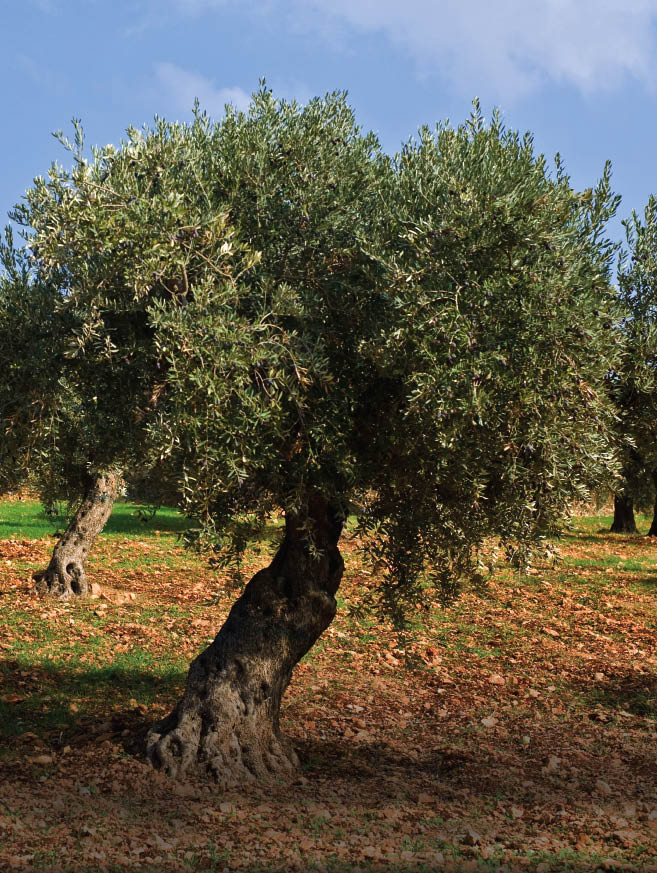
Olive Trees in the Galilee region of Israel. Olive trees, fruit, and oil played significant roles in the life and economy of ancient Israelites. Olive oil, for example, was employed in lamps for light, consumed with food, and had important medicinal and religious functions. In scripture, the longevity and productivity of olive trees symbolized godly people: I am like a green olive tree in the house of God: I trust in the mercy of God for ever and ever (Ps 52:8).
Israelimages/Noam Armonn
Introduction To Jehovah and the World of the Old Testament
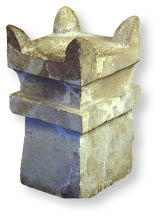
Limestone Israelite horned incense altar discovered at Megiddo, dating from the tenth to the ninth century b.c., twenty-one inches tall.
Used by permission, Zev Radovan/BibleLandPictures.com
The title jehovah and the world of the old testament can be understood in at least two ways. One is the world within the Old Testament: the beliefs and practices outlined in the laws and prophetic records as revealed by Jehovahwhat the Old Testament says and how it says it. The other world of the Old Testament is the historical world in which the people and places recounted in the Old Testament actually existed, where political, social, and cultural connections and tensions developed among the Israelites and between the Israelites and their neighbors. The witness of the Old Testament is that Jehovah chose a particular extended family for certain opportunities and responsibilities. Their successes and failures took place in a very real world of time and space.


